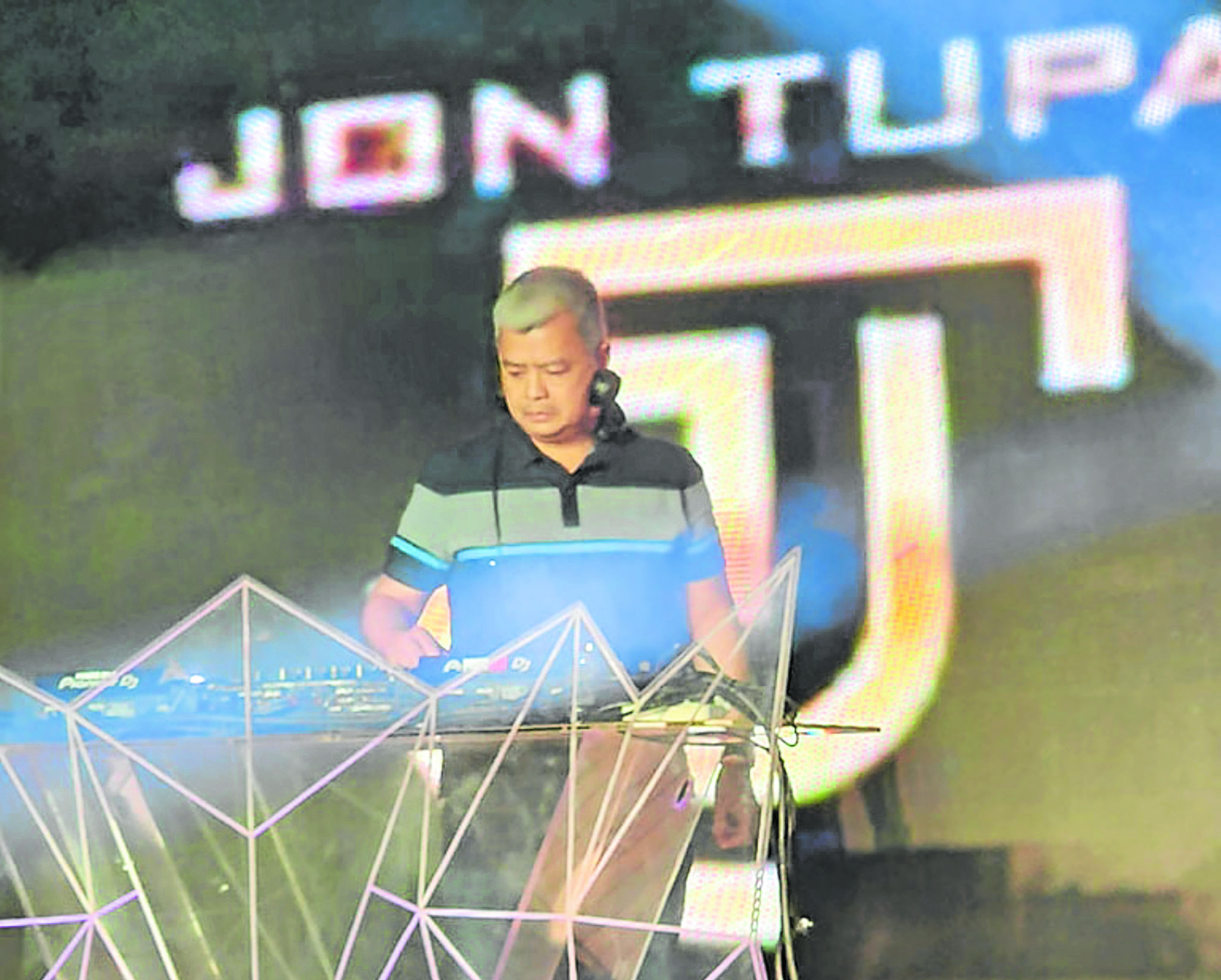
DJ Jon Tupaz
At first glance, DJ-ing may seem easy: You push a bunch of buttons, play one song after another or mash them together. That’s pretty much it, right? But there’s always more than meets the eye —or ear.
Sequencing is one thing; having the creativity and technical mastery to manipulate sounds and weave songs in ways unexpected is another. Having a honed musical palette and knowledge is a must. But for the renowned DJ Jon Tupaz, the most crucial part of the job happens not on the table, but on the floor.
If one hopes to be an effective DJ, one must have a keen sense to read a crowd.
“When you’re a DJ, you can’t just play whatever you want. You can’t put on tracks that only you can relate to or songs that you think the crowd will like,” he told the Inquirer in a recent interview. “It’s bad when you’re the only one enjoying and the crowd before you is dead or not moving or reacting.”
And this ability is something DJ Jon has developed through almost four decades of making people dance—from house parties and soirees during his teens to his heady days at Faces Disco in Makati City, where he held court from the late 1980s to the mid 1990s.
“I come from the disco scene. Every night, I had to make people dance. That’s how I sharpened my senses. And now I can more or less gauge what the crowd likes after playing just one or two songs. And from there, I can play around my set,” DJ Jon said.
So now you know what makes the people dance. But how do you keep them dancing? You give them what they want—but not more than what they can handle.
‘Pace your set’
“You see that the dance floor is packed; everyone’s dancing, having a good time. And sometimes that makes you want to just go play one puller after another or put on a song that you know will make the crowd go crazy. Don’t. You have to pace your set,” he said. “Because before you know it, you have already used up your pullers and it’s not even late at night.”
“In a basketball game, you don’t put out all your aces on court, because there’s still a second, third and fourth quarter,” he said.
While he specializes in retro or music from the 1970s to ‘90s, the 54-year-old DJ still keeps his pulse on what’s hot and popular among young people at the moment. “When I say retro, I mean songs from the ‘70s to I guess even the ‘90s. So the people who want me are people around my age; they won’t get me if Millennial or Gen Z music is what they’re after,” he said.
“I may get invited to a wedding to play music from my generation—Michael Jackson, Madonna, etc. But of course, there will still be young people who will request something they know. So that’s when I give them Dua Lipa and the likes,” said DJ Jon, who used to have his own radio show on Magic 89.9 and 99.5 RT.
DJ Jon is famous for his heady dance mixes that keeps people guessing and moving. He has also won various DJ competitions that put his mixing and scratching skills to test. But one thing that sets DJ Jon apart is his expansive music knowledge, which may be partly attributed to his love for vinyl records—his collection of which is now in the thousands.
So while he mostly uses a DJ system and storage sticks full of songs in his gig these days, DJ Jon can’t help but relish the tactile experience that comes with using a turntable.
Go vinyl
“I do old-school music, so it would be nice if you can go vinyl all the way. Unlike the metallic and overly clean sound of digital, analog is warmer and thicker. But it’s not feasible. It’s logistically challenging—I need to bring about 200 records with me. Yet still, someone will request a song that you won’t have. You also need a solid table, because there will be humming once the subwoofer goes off,” he said. “In that regard, having a USB drive is more practical.”
“But I will use a turntable if the clients specifically ask for it. Usually, it’s fellow vinyl collectors and the purists who request it,” he said. “And that’s always fun because they also know how to play and we end up jamming together.”
Like most music artists, DJ Jon turned to social media when the COVID-19 pandemic hit and prompted lockdowns two years ago. With no gigs to play or parties to rouse, he started holding a weekly Facebook Live session that he called “12-inch Fridays.” Much to his surprise, thousands of people tuned in. And from around 6,000 followers, his fan page now has 24,000.
“People had nothing to do at home during the pandemic. And so I thought about going live online. I played music, drank and gave toasts. And the people would do the same, too. I would ask them to connect their gadgets to their speakers, so we could all feel like we were in a bar,” he related.
These days DJ Jon is more focused on running his lights and sound system rental company, but he still gets to play in clubs and events every so often. And now that pandemic restrictions have considerably eased, invitations are pouring in.
“I don’t miss driving through traffic or the lack of sleep. But I’m excited to see people dancing in person again —very different from doing online shows,” said DJ Jon, whose desire to make people get up and dance hasn’t waned one bit. “As long as I can hear, I’m going to continue playing, make people reminisce or create new memories.”